
|
Manifest Technology Making Sense of Digital Media Technology By Douglas Dixon |
|
|
Articles: | PC Video | Web Media | DVD & CD | Portable Media | Digital Imaging | Wireless Media | Home Media | Tech & Society | PC Video: | PC Video Articles | Video Software Gallery | Video Editing Resources | Getting Started with Digital Video Editing for 2006
|
 |
Mini-DV tape cassette
with FireWire / 1394 cable |
I should also mention two other consumer tape formats. Sony offers the Digital 8 format, which stores DV format video on the familiar 8mm tape format used for analog camcorders. This is a transition format, convenient if you already have a library of analog 8mm tapes, since the camcorder can play them back too. Sony also has the MicroMV format, tiny tapes that permit the design of even smaller camcorders. However, the video is stored in the less-editable MPEG format, so you need to be sure you know what you're getting into.
But why put up with tape at all? It's clumsy to search, with all that rewinding and shuttling just to find the right time code to play or to cue up for recording. Why not move on to disk or solid state memory formats, like we are used to in portable media players?
Especially if you're interested in shooting and sharing, without much editing in between, you even can shoot directly on DVD. Today's DVD camcorders use the half-size 8cm mini-DVD format to record around a half hour of good-quality video. You then can pop out the disc and play it any almost any DVD player (disc drawers have a recessed center area to fir the smaller discs).
However, DVD camcorders can be a bit more bulky to enclose the circular disc, and they record directly to DVD-completive MPEG video format, so you'll need compatible video editing software. There's also the issue of different DVD formats, as needed to be compatible with the rest of your equipment. We'll discuss these details a little later.
While DVD provides the immediate gratification of direct playback, today's portable media players point to a third alternative for even more accessible and portable camcorders -- don't use tape or disc media, just record direct to storage cards or hard disk. After all, today's digital still cameras can shoot short video clips to memory, so why not have camcorders do the same?
For example, the small and light JVC Everio digital media cameras (www.jvc.com/presentations/everio) can record to SD memory card, 1 inch Microdrive cards (tiny hard drives in a memory card format), or to a built-in hard drive. You can record some 15 to 30 minutes of good-looking video to a 1 GB memory card. The 4 GB CompactFlash (CF) Microdrive can store one hour of good-looking video using ultra fine mode (DVD-quality 8.5 Mbps), or cram up to 300 minutes in economy mode (lower res 352 x 240 at 1.5 Mbps). A 30 GB hard disk can store 7 hours at 9 Mbps and up to 37 hours at 1.7 Mbps.
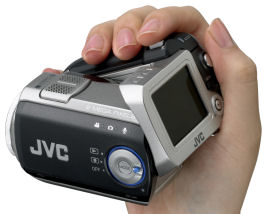
See article: JVC Everio Disk Camcorders
Recording direct to memory or hard drive is much easier than working with tape or even DVD discs -- you can just record without worrying about cueing up the tape. But there's still the issue of what to do with the video once you have filled up the memory. Tape and DVD are easy and inexpensive to archive, unlike memory cards and hard disks. Like working with all those photos from a digital camera, you'll need to be more organized about pulling the clips off the memory into a computer, and then you can back up the original clips as data files, preferably to DVD. Similarly, you'll also need to be careful on long trips to make sure you pack enough storage cards.
The bottom line on choosing a digital camcorder: choose DVD for the quickest path from shooting to sharing, choose DV for the best quality if you're going be doing much editing, and choose a memory-based camcorder for the smallest size and weight, understanding you'll need to be more organized in saving and editing the footage (and you'll pay a price premium for the miniaturization). Again, be aware that for the best quality you should shoot with these camcorders using DVD-compatible MPEG-2 format, and not the even more compressed MPEG-4 format typically used in digital still cameras.
Now that we've gotten digital camcorders straightened out, be warned that there's a new generation coming with high-definition video. A new format called HDV is starting to become available in (high-end) consumer equipment (www.hdv-info.org).

See article: High-Def Editing with HDV
HDV is real high-def video, but stored on standard DV media. The format is still MPEG-2, but with up to 6X higher resolution than standard 720 x 480 DV, in wide-screen 16:9 aspect ratio, and more aggressively compressed:
- 720p (1280 x 720, progressive), approximately 19 Mbps
- 1080i (1440 x 1080, interlaced), approximately 25 Mbps
HDV video data can be imported into a computer much like DV using a FireWire interface, but it requires updated software and, obviously, significantly more processing power to handle the increase in resolution. The new generation of consumer video editing software is adding HDV support, so you can start playing with it, but you'll probably want to upgrade your system before doing intensive work.
In the bad old days of working with analog video, "capturing" video into your computer was a major pain, requiring dedicated cards and custom software. Digital video just blows away the problem: you are no longer capturing, you now just are transferring digital files over a cable from the camcorder to the computer. And the processing and disk speed of today's computers should have no problem keeping up with the compressed video data rates.
DV camcorders typically use a FireWire connection (also known as IEEE 1394, or called i.LINK by Sony), with a hot pluggable interface that also can be used to expand with external hard drives and DVD burners (www.1394ta.org). Apple Macs come with FireWire built in, while PC users may need to add a FireWire board to your computer. (While you are upgrading, get a dual board that also includes USB 2.0 interfaces.)


See also: USB2 Video Capture and Recording
Today's operating systems and video software should have no problem working with DV camcorders over FireWire. You not only can capture your digital video from the camcorder into the computer, but the interface also allows you to control the camcorder from the computer, to review and cue the tape. And once you're done editing, you can export your final video production back from the computer to tape to share and store.
The original USB interface was nowhere near fast enough to use with full rate video, but the more recent High-Speed USB 2.0 interface offers transfer rates similar to FireWire (www.usb.org). The new USB 2.0 "Video Class 1.0" interface standard, supported in some new cameras and software, adds FireWire-like device control of the tape transport.
This focus on digital, however, does not require that you leave analog behind. Digital camcorders include analog video and audio output jacks, so you can play your videos directly to a television, or even record them on a VCR. You also can use your camcorder to preview video as you edit, playing back from your software, through FireWire, through the camcorder, out the analog jacks to see the video playing on a television display. Some digital camcorders also include analog input connections, so you can transfer and preserve your old analog VCR tapes to digital DV format, or use the camcorder as a converter to pass live analog video playback to the computer in DV format.
If you're shopping for equipment and software, you can find bundled products that include both FireWire add-in boards and compatible video editing software. You can also buy external analog to digital (A/D) converter devices from companies like ADS Tech with FireWire and/or USB interfaces (www.adstech.com). Some of these just convert to DV over FireWire, while others compress directly to formats like MPEG-2.
Once you have captured your digital video as files on your computer, there are lots of options for editing them. You may want to do some simple trimming to remove the less interesting portions, maybe add some titles, and a few fun transitions or effects. Or you may want to get much more involved, enhancing the video and audio, building multiple layers of picture-in-picture effects, and mixing the audio with voiceover and background music.
On a Mac, you can get started with Apple iMovie (www.apple.com/imovie), and then graduate up to Final Cut Express HD and Pro (www.apple.com/finalcutexpress).


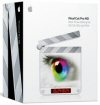
On Windows, you can get started using the free Microsoft Movie Maker for Windows XP (www.microsoft.com/windowsxp/moviemaker, bundled with new systems). The step-by-step interface is great for firing up occasionally for quick and simple editing, but you'll be limited as you grow and want to do more creative editing.

Between starter video editing tools and full-up professional editing lies a middle ground of tools for hobbyists and enthusiasts, with products like Pinnacle Studio (www.pinnaclesys.com) and Ulead VideoStudio (www.ulead.com/vs) available for under $100.


These products are designed for people who want to get started easily and be able to bang out quick edits, but also want some flexibility for fine-tuning and enhancing their movies. As a result, the new versions of these home video editing tools are growing in two different ways: both automating editing for novices through movie-making and tape-to-DVD wizards, while also adding more advanced features to provide additional creative headroom as even hobbyist users gain more sophistication.
If you're interested in more headroom to go further with video editing, families of products like Adobe Premiere Elements (www.adobe.com/products/premiereel) and Sony Vegas Movie Studio+DVD (www.sonymediasoftware.com) provide an accessible interface to learning real video editing in the consumer version, backed by the depth of the full professional tool.


See article: Getting to DVD with Adobe Premiere Elements 2.0
See article: HDV Editing with
Sony Vegas Movie Studio+DVD
See article: HD / HDV
Editing with Sony Vegas 6 and the Vegas+DVD Production Suite
The recent versions of even these consumer applications offer capture and editing, import and export of a variety of video file formats, built-in DVD authoring and burning, and native editing support for MPEG-2 and even MPEG-4 clips. In this case, the software has caught up to all the hardware formats -- it's now possible to import and edit both MPEG-2 clips, including from DVDs (not copy protected), and MPEG-4 clips.
While many video editing applications provide built-in support for directly creating DVDs, you also may want to use a dedicated DVD authoring tool, for example to combine a group of clips into a single DVD.
As with video on the Macintosh, you can get started with Apple iDVD (www.apple.com/idvd), with the possibility of moving up to DVD Studio Pro (www.apple.com/dvdstudiopro).


Consumer DVD authoring tools on Windows include Sonic MyDVD (www.mydvd.com) and Ulead DVD MovieFactory (www.ulead.com/dmf) are available starting at around $50, and often bundled with DVD burners.


These kinds of DVD authoring applications also are available as part of larger media creation and disc burning suites, including Nero Ultra Edition (www.nero.com) and Roxio (now Sonic) Easy Media Creator (www.roxio.com/en/products/emc75).


These applications are focused on simplifying the authoring process: you import material from tape or video files, and the tool automates the menu layout and navigation using built-in menu design styles. They also allow you to cut out the editing process for simple transfers to DVD -- you can capture directly into the DVD authoring application, import clips from other DVDs, do simple splicing and trimming, and then burn the final DVD. Even easier, you can go directly from tape to DVD like a set-top recorder: the software will capture from the tape, break it into scenes, build the DVD menus, and burn the disc, all in one hands-off operation.
Of course, the tradeoff for this simplification is a loss of control over the look and navigational design of your DVDs. For more control and DVD features like multiple audio and subtitle tracks, you can step up to products like Adobe Encore DVD (www.adobe.com/products/encore), Sonic DVDit (www.sonic.com) and Ulead DVD Workshop (www.ulead.com/dws), available in multiple versions for around $200 to $400.
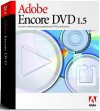


However, you actually do not need a computer to convert, copy, and even edit your videos. Today's set-top DVD recorders, especially with built-in hard disk drives, allow you to capture video, assemble and trim clips, set chapter points, and create finished discs with nice menus -- all in your living room, and without involving your computer. It's also possible to come back later and re-edit these DVDs on a computer. You can create DVDs on the set-top in VR (Video Recording) format, which includes information about the DVD format to make it easy to continue to edit. Then you can burn a final disc in standard DVD-Video format, which will be more compatible for sharing with others.
Next, it's time to burn that great DVD that you have authored. But hold off just a bit longer -- instead, first export your DVD as a "DVD volume" saved as a folder on your hard disk. Since the folder contains the same files that will be burned to disc, you can use a DVD player application like CyberLink PowerDVD (www.gocyberlink.com) or InterVideo WinDVD (www.intervideo.com) to play back and test your DVD design, without the delay (and cost) of burning a disc.
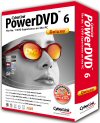

When it's time to actually burn, you will be faced with the confusing of the unfortunate jumble of competing DVD formats. To start with, DVD has two basic recordable formats like CD, re-writable ("RW"), good for test discs since they can be erased and reused, and write-once ("R") for permanent copies that also are more compatible, particularly with older players.
See article: DVD Format Compatibility
But unlike CD, DVD also has two competing (and incompatible) formats, the original DVD-R/-RW ("dash") format defined by the DVD Forum (www.dvdforum.org), and the corresponding DVD+R/+RW ("plus") format from the DVD+RW Alliance (www.dvdrw.com). To burn a DVD, you will need the appropriate format that is supported by your burner hardware. However, the format only matters for recording -- once the DVD is burned, the format should no longer make a difference for playback on most DVD players. To solve this problem, get a "dual-format" burner that supports CD and DVD, R and RW, dash and plus -- so whatever media you happen to have around should work.

 DVD-RAM media
DVD-RAM media
Just to confuse things further, there is another recordable format called DVD-RAM, which is a significantly different physical disc designed to provide access like a hard drive (www.ramprg.com). DVD-RAM is great for DVD recorders and DVD camcorders, since it provides instant access for playback and recording, and you can even time-shift by recording a live show and playing back earlier material at the same time. Unfortunately, DVD-RAM is not compatible with regular DVD drives, so you need to make sure you buy RAM-compatible equipment if you want to move these discs from the camcorder to the set-top to a computer.
This past year also has seen the roll-out of "Double/Dual Layer" recordable DVDs, which expand the capacity from 4.7 GB to two layers holding a total of 8.5 GB per disc. Again, the software has needed to catch up with this development, but new versions of applications now support these "DL" drives, for burning two hours or more of good-quality video to a single disc. As usual, since this technology is relatively new, you can find these discs to be less compatible with existing DVD players.
See article: Dual-Layer DVD and Beyond
A final tip on DVD burning: DVDs have significantly tighter tolerances than CDs, the technology is all relatively new, and the manufactures are caught in severe price pressure from competition. As a result, it's best to stay with name-brand products, and not to try to shave pennies with cheap off-brand equipment, media, and software. For the best results, also burn discs at the rated speed. After some experimentation with different mixes of software and media, you should be able to find a good groove and avoid burning problems and unplayable discs.
Beyond conventional DVD, coming next year is the next generation of blue-laser high-def DVD technology, offering multiple layers of 15 to 25 GB each. Unfortunately, the DVD industry has become embroiled in a full-fledged format war, between HD DVD (www.hddvdprg.com) and Blu-ray Disc (BD, www.blu-raydisc.com). As a result, unless you desperately need massive storage, it will be best to simply wait on the sidelines for the dust to settle (and prices to drop) before jumping into this battle.

![]()
See article: HD on DVD -- Better Video, More Storage
See article: Multi-Layer High-Def DVD
Technology
See article: Next-Generation
High-Def DVD Authoring
Beyond DVD, you also can share your videos in electronic form -- as disk files, over the Internet, and on portable devices. Most video editing tools offer a stunning variety of export options, for different purposes, in different formats, and with additional options. Your best bet is to start with the built-in default presets for your purpose, and work from there.
First, you can export your production as a movie to a video file on disk, so you can play back your production, share it over the local network, or even burn it as a data file to a CD or DVD to archive or share with others. Choose the Microsoft Windows Media format for playback on Windows systems (WMV, www.windowsmedia.com), the Apple QuickTime Movie format for cross-platform playback (MOV, www.apple.com/quicktime), and the older Microsoft AVI format for compatibility with older Windows systems.
See article: Media to Go: Microsoft Windows Media Player 10You also can use the MPEG formats to create files that should be playable across a variety of platforms, especially if you are posting the files for public access: the original MPEG-1 for older systems, and MPEG-2 for better quality and possible later export to DVD. You also can use the newer MPEG-4 for better compression (www.mpegif.org), as long as you are sure your audience has newer systems with compatible players (like the new QuickTime 7). You can also use branded versions of MPEG-4 like DivX (www.divx.com).
See article: Next-Generation Video: MPEG-4 and Streaming Media
Besides posting files for download, you can export to Internet streaming formats, including variants of QuickTime, Windows Media, and RealNetworks (guide.real.com). These can be useful even if you do not have a compatible streaming Web server -- use a "progressive download" version of the format that allows the player to simply download the video file, but start playing it from the beginning even as it is still being downloaded.



![]()
The Macromedia Flash Video format is also becoming more popular (www.macromedia.com/devnet/mx/flash/video.html). Flash videos can be easily viewed by a broad audience, since the Flash player is already installed on over 94% of web-connected computers. And, of course, you then can integrate your videos into dynamic interactive Flash applications.
Your editing applications should help you check the sizes of the files that you are creating for downloading -- or for sending by e-mail. To avoid clogging your Internet connection, gumming up your e-mail server, and irritating your recipients, please use better compression formats and even reduce the resolution of your clips in order to make smaller, more manageable files, optimizing for broadband or even dial-up connections.
Finally, you can also export files to download and play on a variety of portable media devices through Windows Media and MPEG-4 (typically via QuickTime), at small resolutions around 200 x 200.
For example, Microsoft Pocket PC and Windows Mobile smartphone devices (www.microsoft.com/windowsmobile) can play small Windows Media clips, and newer mobile phones can play MPEG-4 clips. There are also a variety of portable media players from companies like Archos (www.archos.com) and Creative (www.creative.com) that can play a variety of audio, video, and photo formats, and you can even download and share clips on a gaming device like the Sony PlayStation Portable (PSP), www.us.playstation.com/psp.aspx).
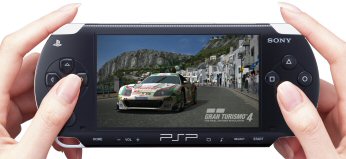
See article: Digital Holiday 2005: Portable Storage Drives and Media Players
That's a lot of possibilities and options for working with digital video, but you can see that it is possible to get started with the basics and expand from there.
Many of these software companies offer trial versions that you can download from their websites, so you can experiment with them before you buy.
Shoot
JVC Everio
Digital Media Cameras
www.jvc.com/presentations/everio
HDV Information
www.hdv-info.org
Capture
FireWire / IEEE
1394
www.1394ta.org
USB
www.usb.org
ADS Tech
www.adstech.com
Edit
Apple
iMovie
www.apple.com/imovie
Apple
Final Cut Express
www.apple.com/finalcutexpress
Microsoft Movie Maker
www.microsoft.com/windowsxp/moviemaker
Pinnacle Studio
www.pinnaclesys.com
Ulead VideoStudio
www.ulead.com/vs
Adobe Premiere Elements
www.adobe.com/products/premiereel
Sony Vegas Movie
Studio+DVD
www.sonymediasoftware.com
DVD Authoring
Apple
iDVD
www.apple.com/idvd
Apple
DVD Studio Pro
www.apple.com/dvdstudiopro
Sonic MyDVD
www.mydvd.com
Sonic DVDit
www.sonic.com
Ulead DVD MovieFactory
www.ulead.com/dmf
Ulead DVD Workshop
www.ulead.com/dws
Nero Ultra
Edition
www.nero.com
Roxio (Sonic) Easy Media Creator
www.roxio.com/en/products/emc75
DVD Burning
InterVideo
WinDVD
www.intervideo.com
CyberLink PowerDVD
www.gocyberlink.com
DVD Forum
www.dvdforum.org
DVD+RW Alliance
www.dvdrw.com
DVD-RAM
www.ramprg.com
Sony - DRX-800UL DVD Burner
www.sony.com/dvdburners
HD DVD
www.hddvdprg.com
Blu-ray Disc (BD)
www.blu-raydisc.com
Share
Microsoft Windows
Media Video (WMV)
www.windowsmedia.com
www.microsoft.com/windows/windowsmedia
Apple QuickTime
www.apple.com/quicktime
www.apple.com/mpeg4
RealNetworks
guide.real.com
www.real.com
MPEG Industry Forum - MPEG-4
www.mpegif.org
DivX
www.divx.com
Macromedia Flash Video
www.macromedia.com
www.macromedia.com/devnet/mx/flash/video.html
Microsoft Windows
Mobile
www.microsoft.com/windowsmobile
Microsoft Portable Media Center
www.microsoft.com/windowsmobile/devices/portablemediacenter
Archos
www.archos.com
Creative
www.creative.com
Sony PlayStation Portable (PSP)
www.us.playstation.com/psp.aspx
|